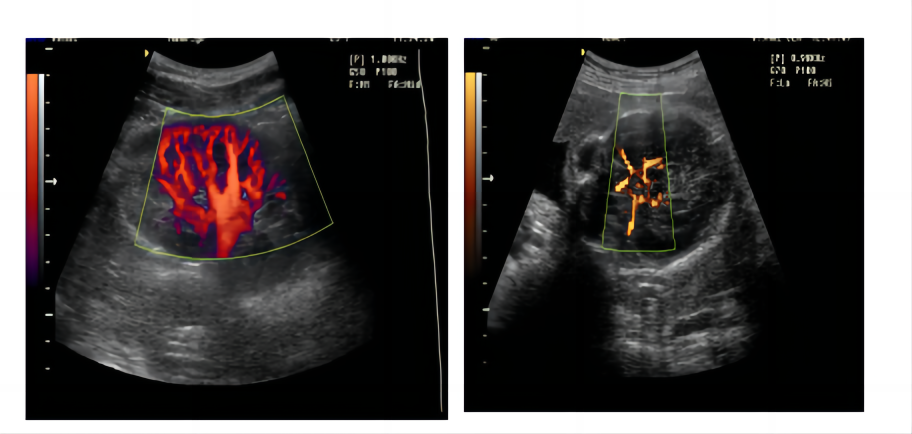Veterinary color Doppler works based on the principles of Doppler ultrasound imaging, with the added capability of presenting blood flow information in color. Here’s an overview of how veterinary color Doppler works:
Generation of Ultrasound Waves:
The color Doppler system utilizes a transducer or probe that emits high-frequency ultrasound waves into the body of the animal being examined.
Interaction with Blood Cells:
As the ultrasound waves encounter moving blood cells within blood vessels, the frequency of the waves is altered. This change in frequency, known as the Doppler shift, is directly proportional to the velocity of the blood cells.
Doppler Shift Calculation:
The system calculates the Doppler shift by analyzing the changes in frequency of the reflected ultrasound waves. This information is then used to determine the speed and direction of blood flow in the vessels.
Color Mapping:
The color Doppler technique assigns colors to the flow of blood in the vessels to provide a visual representation of the velocity and direction of blood flow. Typically, red is used to represent blood flow towards the transducer, while blue indicates blood flow away from the transducer.
Color Doppler Imaging:
The color Doppler system combines the conventional grayscale ultrasound images with the color-coded information about blood flow. This results in a composite image where anatomical structures are displayed in shades of gray, and blood flow is superimposed in color.
Identification of Abnormalities:
Veterinarians use color Doppler imaging to identify abnormalities in blood flow, such as blockages, stenosis (narrowing of vessels), or abnormal blood vessel formations. It is particularly useful in assessing cardiovascular conditions, identifying tumors, and evaluating organ perfusion.
Pulsed-Wave and Continuous-Wave Doppler:
Veterinary color Doppler systems often include both pulsed-wave Doppler and continuous-wave Doppler modes. Pulsed-wave Doppler is used for detailed evaluation of blood flow in specific areas, while continuous-wave Doppler allows for the assessment of high-velocity blood flow.
In summary, veterinary color Doppler combines traditional ultrasound imaging with the Doppler effect to visualize and quantify blood flow in real-time. This technology is valuable in diagnosing and monitoring various medical conditions in animals, providing veterinarians with a non-invasive tool to assess the circulatory system and identify potential health issues.
Dawei ultrasound veterinary doppler for sale, if you want to know more about veterinary doppler machine more information, welcome to consult us!
Post time: Nov-16-2023




